Introduction to Mutianyu Great Wall
Nestled in the picturesque Huairou District, the Mutianyu section of the Great Wall stands as a testament to China’s rich history and architectural prowess. Located approximately 70 kilometers northeast of Beijing, this well-preserved stretch offers visitors a glimpse into the past while surrounded by breathtaking natural beauty.
Mutianyu’s history dates back to the Northern Qi Dynasty (550-577), with major renovations occurring during the Ming Dynasty (1368-1644). Restored in the 1980s, it has become one of the most popular sections of the Great Wall for tourists seeking a less crowded yet equally impressive experience compared to the renowned Badaling section.
What sets Mutianyu apart is its unique integration of natural landscapes with military fortifications, offering a perfect blend of history and scenic beauty.
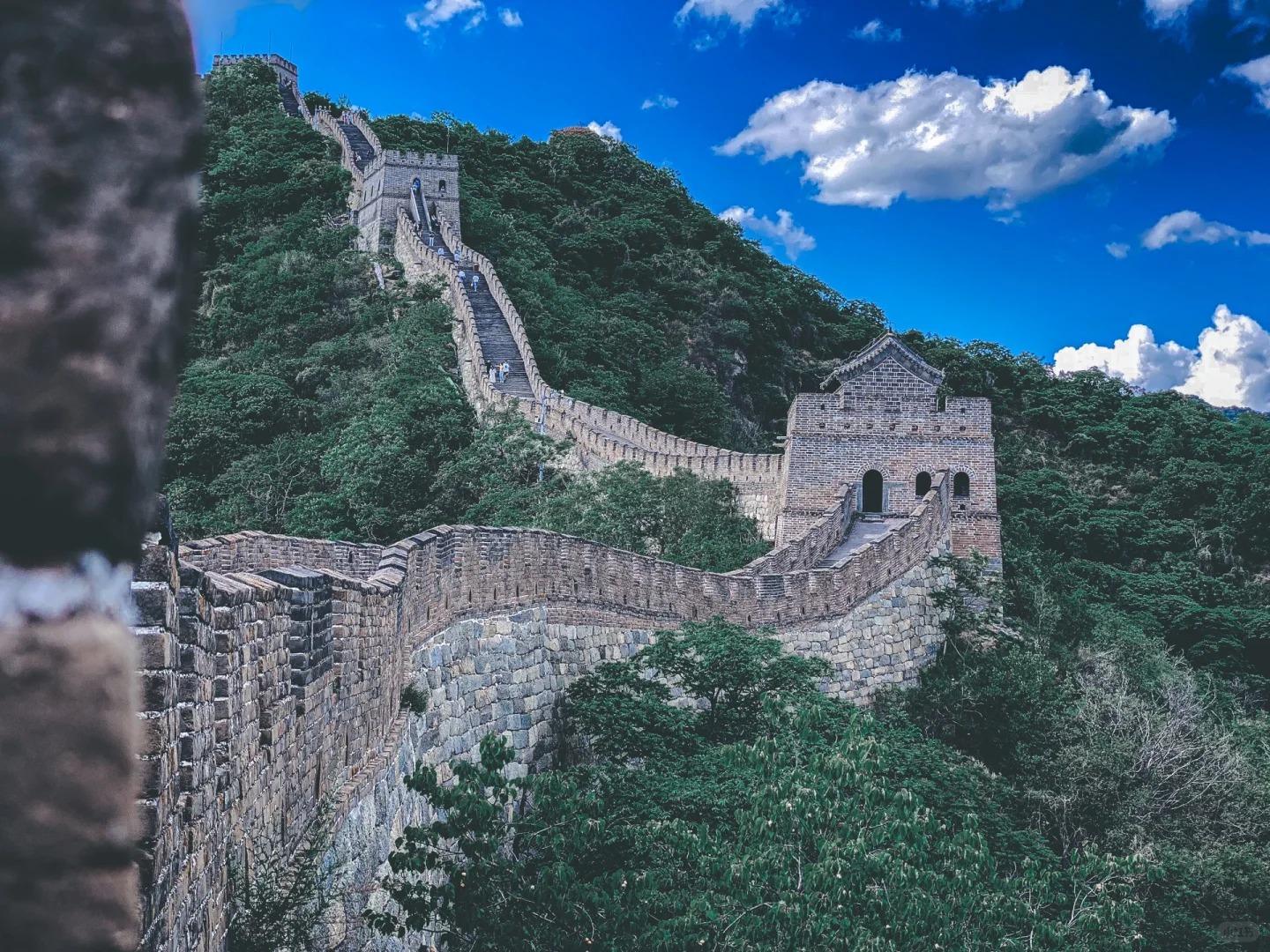
Historical Significance
The Mutianyu Great Wall played a crucial role in defending the capital and imperial tombs during various dynasties. Its construction spanned several periods:
- Initial build: Northern Qi Dynasty (550-577)
- Major expansion: Early Ming Dynasty (14th century)
- Continuous reinforcement: Throughout the Ming era
Strategically, Mutianyu served as a vital northern barrier, protecting Beijing from Mongol invasions. Its robust construction and tactical positioning made it one of the most impregnable sections of the Great Wall.
Archaeological findings reveal unique architectural features, including:
- Use of granite in wall construction, enhancing durability
- Distinctive “Zhuanduokou” style watchtowers
- Rare inclusion of both inner and outer parapets for enhanced defense
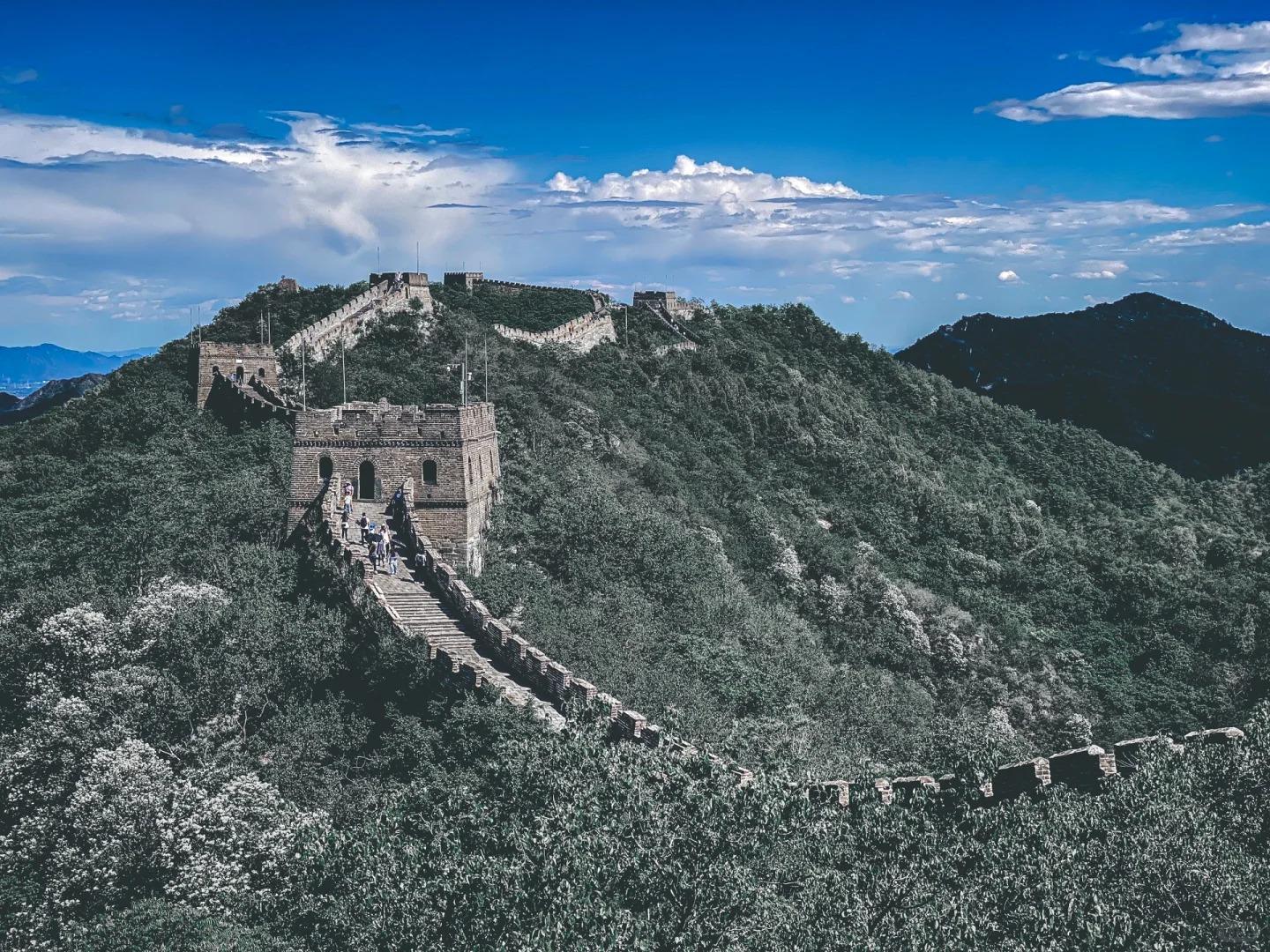
Scenic Beauty and Landscape
Mutianyu’s allure lies in its harmonious blend of man-made wonders and natural splendor. The wall snakes through lush forests and rugged mountains, offering panoramic views that change with the seasons:
- Spring: Blossoming flowers and verdant hillsides
- Summer: Lush green canopies and clear skies
- Autumn: A tapestry of red, orange, and gold foliage
- Winter: Snow-capped peaks and serene white landscapes
Compared to Badaling, Mutianyu offers a more serene and less commercialized experience, allowing visitors to immerse themselves in the wall’s history and natural surroundings without the distraction of large crowds.
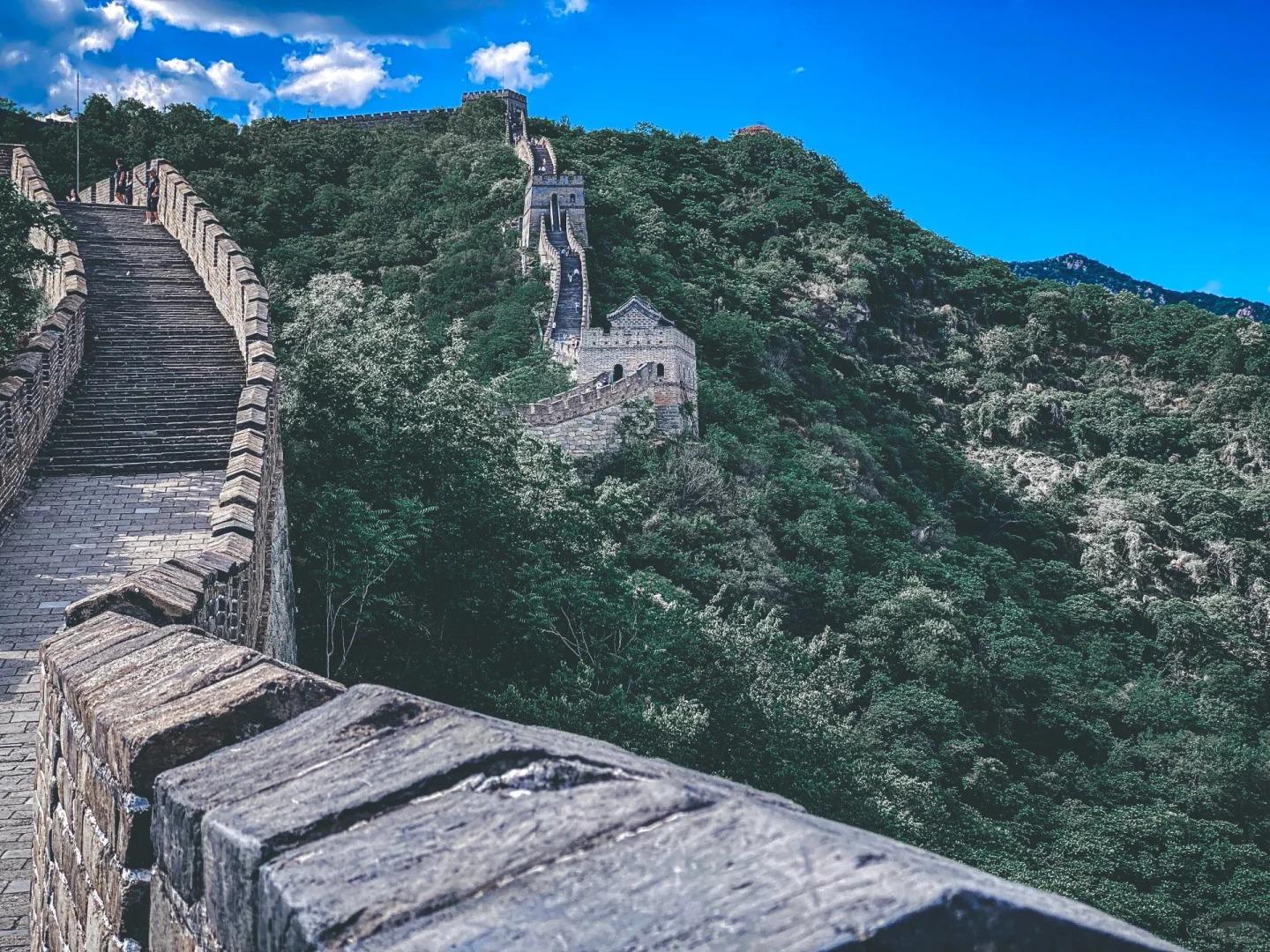
Visitor Experience and Accessibility
Mutianyu caters to various preferences and physical abilities:
| Access Method | Description | Best For |
|---|---|---|
| Cable Car | Quick ascent/descent, panoramic views | All visitors, especially those with limited mobility |
| Chairlift | Open-air ride up the mountain | Adventure seekers, photographers |
| Toboggan | Thrilling descent option | Families, thrill-seekers |
| Hiking | Challenging climb, authentic experience | Fitness enthusiasts, history buffs |
Notably, Mutianyu is one of the few sections with wheelchair-accessible areas, making it more inclusive for all visitors. The crowd levels here are generally lower than at Badaling, offering a more relaxed exploration experience.
Notable Features and Attractions
Mutianyu boasts several unique features:
- Watchtowers: 23 watchtowers, each with distinct designs and historical significance
- Mutianyu Great Wall Museum: Offers insights into the wall’s construction and history
- Viewing Platforms: Strategic spots for breathtaking panoramic views and photos
- Nearby Attractions: Huairou Reservoir, Hongluo Temple, and traditional villages
The density of watchtowers at Mutianyu is unparalleled, providing visitors with ample opportunities to explore different architectural styles and defensive strategies employed throughout history.
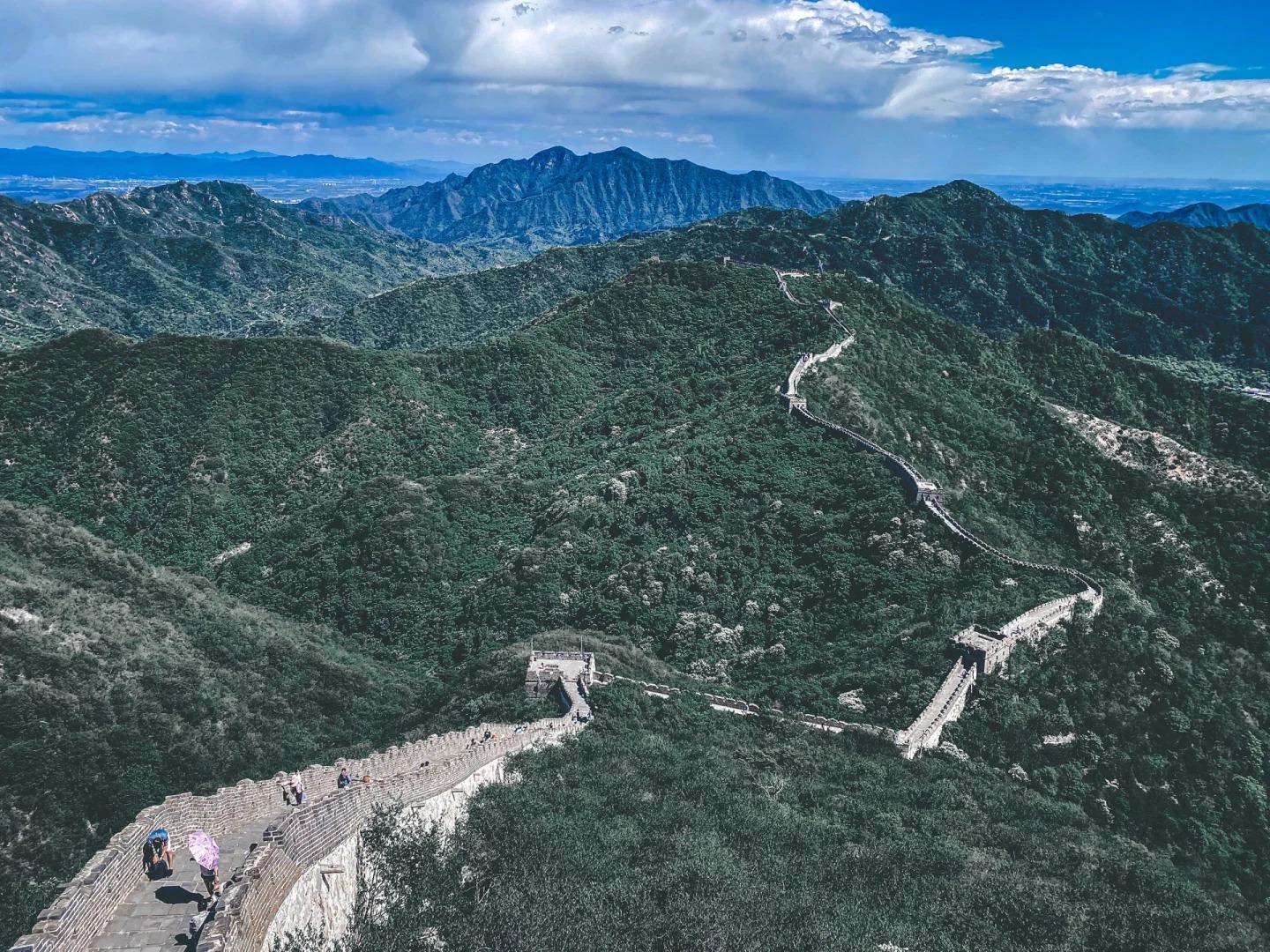
Practical Tips for Visitors
To make the most of your Mutianyu experience:
- Getting There:
- Public Bus: Take bus 916 Express from Dongzhimen to Huairou, then a local minibus
- Private Transport: Book a car service or join a tour group for convenience
- Best Times to Visit:
- April-October for pleasant weather
- Weekdays to avoid crowds
- Early morning for the best lighting and fewer people
- Recommended Duration: 3-4 hours for a comprehensive visit
- Essential Items:
- Comfortable walking shoes
- Weather-appropriate clothing (layers recommended)
- Water and snacks
- Camera for capturing memories
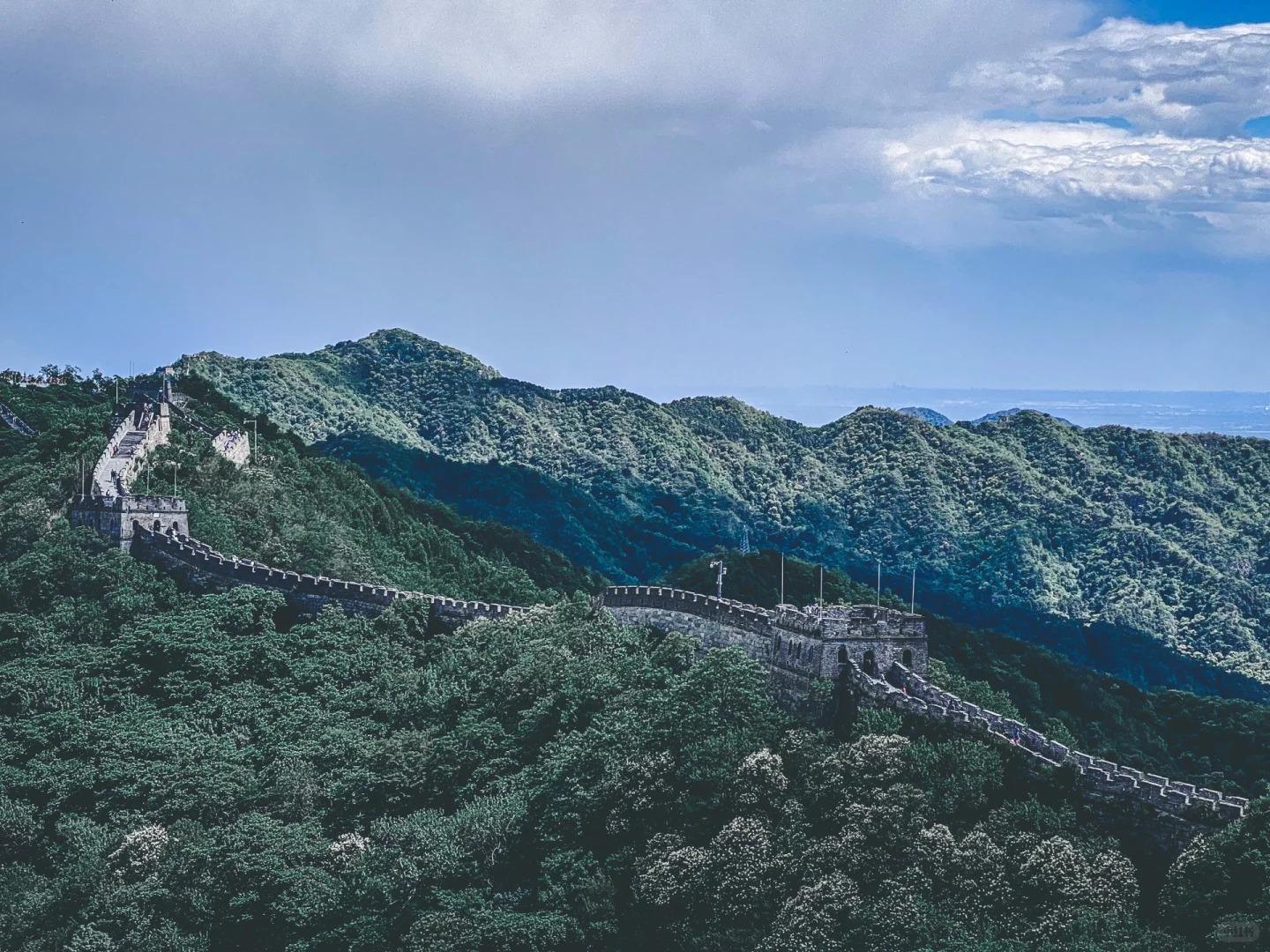
Cultural Impact and Conservation
The Mutianyu section symbolizes China’s commitment to preserving its cultural heritage. Ongoing conservation efforts include:
- Regular maintenance to prevent erosion and structural damage
- Strict regulations on visitor behavior to minimize human impact
- Reforestation projects in surrounding areas to maintain the ecological balance
Culturally, Mutianyu continues to inspire art, literature, and national pride. It serves as a powerful reminder of China’s historical resilience and architectural achievements.
Future plans focus on sustainable tourism development, balancing preservation with accessibility. Initiatives include:
- Enhancing educational resources for visitors
- Implementing advanced conservation technologies
- Promoting responsible tourism practices
The Mutianyu Great Wall offers visitors an unparalleled journey through China’s history, set against a backdrop of stunning natural beauty. Its well-preserved structures, coupled with modern amenities, make it an ideal destination for those seeking to experience the grandeur of the Great Wall while enjoying a less crowded and more immersive environment. Whether you’re scaling the ancient steps, gliding down in a toboggan, or simply marveling at the panoramic views, Mutianyu promises an unforgettable encounter with one of the world’s most iconic monuments. As you walk along its storied paths, you’ll not only traverse centuries of history but also gain a deeper appreciation for the ingenuity, determination, and cultural significance that the Great Wall represents in China’s past, present, and future.






